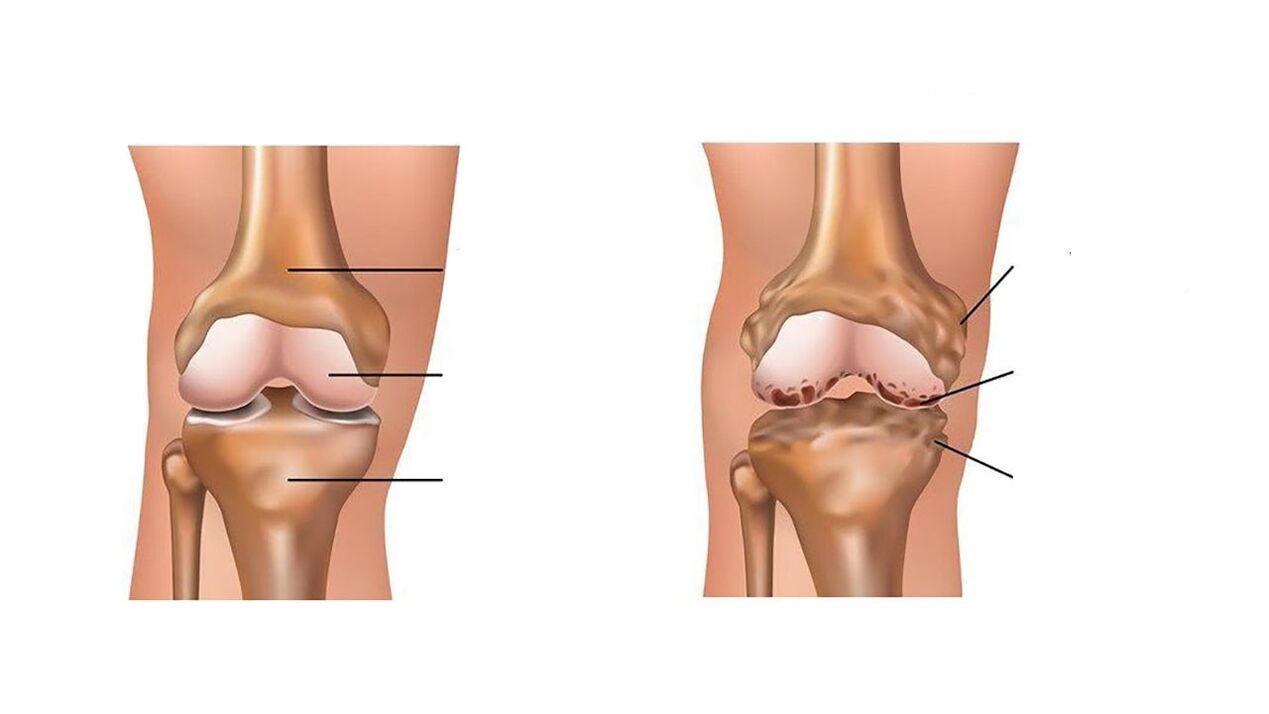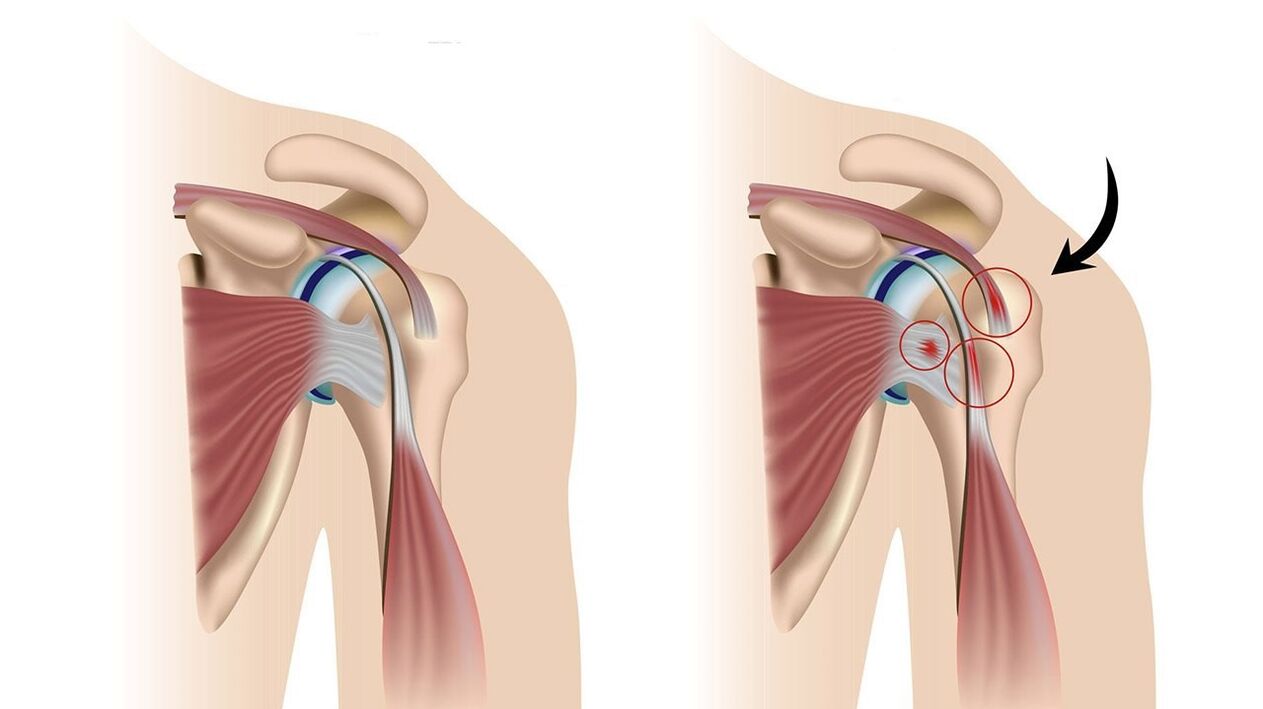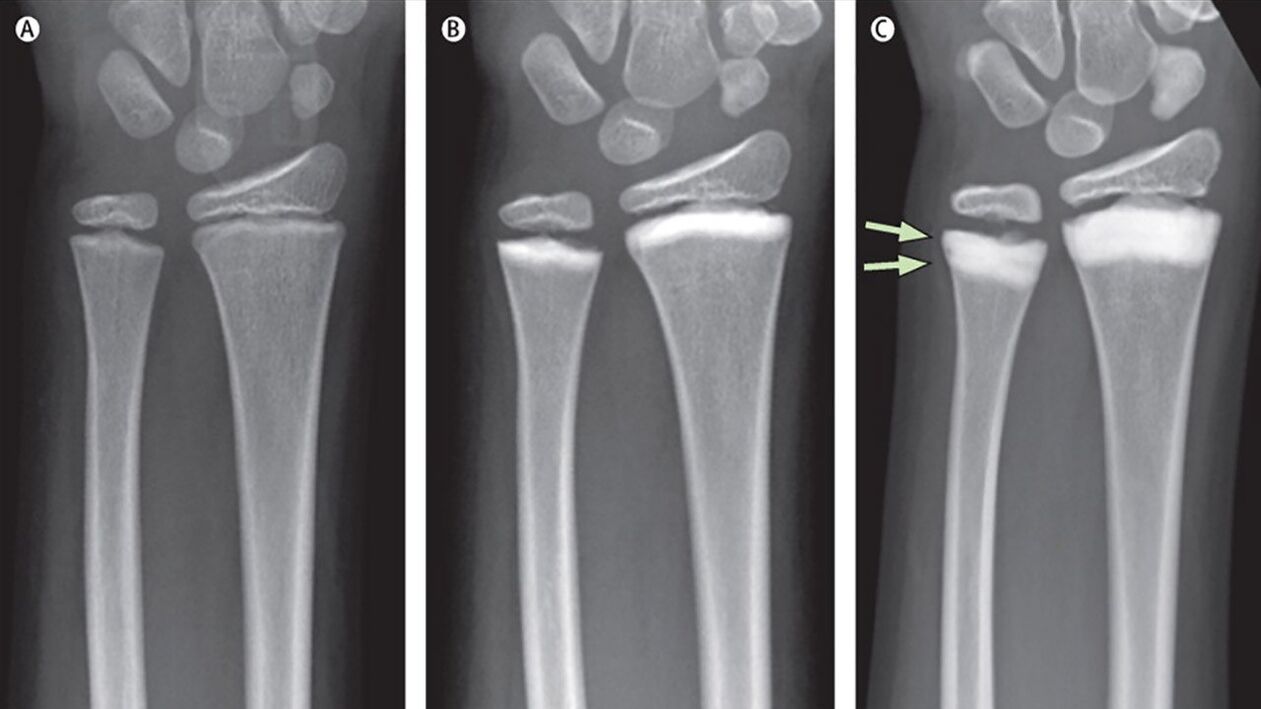Symptom: joint pain.

Possible causes: trauma, arthritis, arthropathy, osteoarthritis.
Doctor: the therapist records the complaints, sends them for examination and, based on his results, will refer the patient to a doctor with a narrower specialization.
Treatment: is prescribed separately in each case.
Prevention: reduction of the load on the joints, maintenance of a healthy lifestyle, timely examination by a doctor, diet.
Why do joints hurt?
Joints can be damaged for two reasons: arthritis, inflammation of the joint tissues or arthritis (osteoarthritis), a degenerative-dystrophic process, ie destruction of the bone-cartilage elements of the joint. The diagnosis should be made by a doctor, but you can navigate the symptoms yourself.
Inflammation in arthritis is like a forest fire: it all starts violently, the joint swells and hurts a lot even at rest and when you try to make the slightest movement, the pain intensifies. The skin in this area turns red and warms to the touch.
With arthritis, everything is different: the joints are destroyed slowly and unacceptably at first. Joint pain, at first mild, pain that occurs only during movement, quite tolerable, increases over time, becomes constant and severe enough to disturb calm and sleep. The deception of this pain is that it is delayed in relation to the pathological process that continues in the joint and appears only when the X-ray images show signs of destruction of the respective joint, unfortunately, irreversible. This is the proliferation of the spines (marginal osteophytes) along the edge of the articular surfaces of the bones that form the joint, narrowing of the joint space and points of osteosclerosis - areas of abnormal increase in bone density. If arthritis affects a joint, say, the knee, the joint changes and the function of the adjacent joints - the hip and ankle joint - is disrupted. They face an increased and, at the same time, uneven load and, therefore, wear out faster. Thus, arthritis affects the joint from the joint and the pain intensifies and can spread to all new joints.

Types of pain
The type and nature of the pain sensations depends on the cause that caused them.
Joint pain with flu and acute respiratory infections on a background of high temperature (up to 40 ° C). This pain disappears on its own as soon as the temperature returns to normal and does not require special treatment.
For arthritis pain:
- sharp,
- painful,
- pulsating
- hunting,
- occurs at rest and intensifies when performing certain movements,
- giving to neighboring areas,
- during detection (palpation) it hurts everywhere, on the entire surface of the joint, but especially along the joint space.
Periarthritis is particularly unbearable - inflammation of the tissues around the joint (sacs, tendons and ligaments). How everything happens can be explained with the example of the shoulder joint. First, the joint begins to ache. The pain quickly becomes excruciating, almost unbearable. It radiates to the shoulder and neck area, intensifies (and is often accompanied by seizures) when you try to stretch your arms at the sides at shoulder level or bend them at the elbow and bring them behind your back. At the end of the lock, which rests on the shoulder joint in front, and in the same position on the back there are points of pain. When you press them with one finger, the pain increases. With such acute sensations, the joint needs to be immobilized - the hand must be hung on a handkerchief, try not to move it. This is a prerequisite for the success of the treatment.

Great! as soon as possible to select an appropriate analgesic and anti-inflammatory treatment after the examination. This will reduce the severity of joint inflammation, reduce pain and improve quality of life.
With arthritis, joint pain is different:
- The pain is initially mild and inconsistent, its character is wavy - at times it is absent for weeks or even months. But over time, without treatment, the waves of pain become stronger and more frequent, and the gaps between them decrease.
- Pain in the beginning: his outburst occurs on the first attempt to take a step, to raise his hand, to bend down. Then the joints seem to develop and the pain is relieved.
- Mechanical rhythm - the joint starts to ache when you load it. Initially, the pain occurs with high loads - lifting weights, climbing stairs, walking for a long time, playing sports. Later, even small movements repeat the pain. But at the same time, in contrast to the unpleasant sensations in arthritis, the pain in arthritis disappears when you give a rest to the joint, give it peace. This is why doctors talk about mechanical rhythm: movement causes pain and rest relieves it.
- Night discomfort. There is no pain at rest, but lying is uncomfortable, all the time you want to change your posture, find a place where you could forget about your joints and spine, but it does not work. Joint pain, and that's it! The shackles of the morning: he woke up, there is no pain yet, but it was as if you were chained or squeezed tightly - the joints do not obey, but gradually the feeling of stiffness disappears, the range of motion in the joint is restored.
- Protective attitude. When a joint hurts, you want to take the so-called analgesic - an analgesic position, in which it becomes easier. This is best seen in the example of the spine: it also consists of joints. When one of these wedges, and with it a nerve root enters the bone marrow, there is acute pain at the base of the sciatica. Anyone can diagnose a person with sciatica after seeing how the poor person is deformed. In fact, with the help of this "discord", supported by muscle spasm, the body tries to reduce the pain to a minimum.
Osteoarthritis of the hip and knee
Pain with damage to the hip joint (and often suffers on one side) is located in the upper thigh and is transmitted to the knee. He usually starts to get sick in the second half of the day, when he has already worked hard enough. The pain increases with walking and at rest it weakens and disappears.
The knee joints often suffer from both at the same time. They unfold easily and begin to ache when bent. The so-called ladder symptom is characteristic of knee damage. The descent from it becomes more painful than climbing. Sometimes the joint is stuck in a bent position due to the growth of bone (osteophytes) or its fragment (such a "lost" bone fragment inside the joint is called a "joint mouse"). Joint blockage is accompanied by increased pain when you try to bend or straighten it.
Knee mobility problems are not always associated with arthritis. Sometimes the common wedge can be "fake". Among the most common causes of pseudobloc knee are:
- Swelling (excess fluid in the joint capsule can affect complete flexion and extension of the joint).
- Inflammation (inflammation of the tissues in the knee, such as rheumatoid arthritis and gout).
- Improper knee movement in the joint (accompanied by severe pain).
- Irritation of the tissue covering the joint.
- Knee Injury (Any serious knee injury, such as a sprain, can cause a muscle spasm).
Great! If the joint is blocked, active movements in the joint are impossible, it is necessary to seek medical help from an orthopedic casualty as soon as possible - emergency room, clinic, hospital. Do not hesitate to call the ambulance - this is a good reason to call it, because you will not go far with one foot and you may not even get to the clinic alone.
Diagnostics
From the nature of the pain and the appearance of the affected joint, a preliminary diagnosis (arthritis or arthritis) can be made even by a non-specialist. But hurry to the regional clinic to confirm the cases!
Which doctor should I go to?
In case of joint pain, you should make an appointment with a local therapist. Performs the functions of a medical sender: records complaints and clinical symptoms, directs the patient for examination and, based on its results, decides which doctor should consult each particular patient. A wide variety of specialists are involved in maintaining joint health:
- article specialist.
- orthopedic trauma.
- rheumatologist.
- vertebrate (if the joints of the spine are affected).
- podiatrist (when it comes to foot joints).
- surgeon.
- oncologist.
- neurologist (if the joint has already healed, but the pain remains in it).
- dietitian (if the joints are damaged due to metabolic disorders, such as gout or if there is excess weight).
What tests should you go through and do research?
The test begins with the simplest - a clinical (finger) and biochemical (vein) blood test for signs of inflammation, as well as a general urine test. In some diseases of the joints, the kidneys are involved in the pathological process. Excess uric acid in the urine may indicate gout as a cause of joint pain.
A laboratory study of synovial fluid, located inside the joint, helps to detect the inflammatory process and to clarify its nature. Obtained by perforation of the joint capsule - puncture. If necessary, histological examination of a fragment of the synovial membrane covering the joint cavity from the inside is performed.
A proven diagnostic method is x-ray of the joint in two standard views. It will help to visualize the narrowing of the joint space, bones, osteoporosis and osteosclerosis (areas of reduced and increased bone density.

At present, extensive information on the condition of the joint is provided by magnetic resonance imaging.
What diseases of the joints can cause pain?
There are more than a hundred such diseases. In the elderly, arthropathy is widespread and in the young, rheumatoid arthritis and injuries (bruises, fractures, ligament injuries).
"Along with high blood pressure, commonly called hypertension, joint diseases lead to the list of the most common reasons for seeking medical help. And the chronic pain that patients experience at the same time and because of which they can not live and work fully is not only a medical, but also an important social problem, - says the doctor of medical sciences, professor of rheumatology. - Of all the arthritic joints, arthropathy is the most common. 97% of those over the age of 65 suffer from this disease. And if we are talking about chronic inflammatory diseases of the joints - arthritis, here comes to the fore rheumatoid arthritis. It is also not a gift, and not only because of the pain syndrome: within 3-5 years after its onset, this type of arthritis inevitably ends with the assignment of a disability group to the patient. "
How to get rid of joint pain urgently?
Analgesics can quickly overcome the pain: the pain can not be tolerated under any circumstances, if you do not want it to turn from acute to chronic. This transformation can happen very quickly - in 3-4 weeks, so getting rid of joint pain should be urgent work. The joint starts to ache as soon as you press it. Therefore, in case of pain, a non-steroidal anti-inflammatory drug (NSAID) with good analgesic effect should be taken half an hour before any physical activity.
If the joint pain worsens at night, in addition, before going to bed, your doctor will recommend taking metamizole sodium, as well as drotaverine with nicotinic acid to improve local blood circulation.
Topical treatment
NSAIDs have a terrible side effect - they can damage the gastric mucosa until ulcers form, so try to apply them topically, as part of all kinds of ointments and gels with anti-inflammatory and analgesic properties. They are usually rubbed into the skin over the affected joint twice a day. The pain is also relieved by special plasters with magnetic powder, which are glued to the joint or spine.
What happens if the joints are not treated?
The common disease, if left untreated, can lead to loss of free movement and disability. If one or more large joints are affected, they can be replaced with artificial ones. Multiple joint damage (polyarthritis) is usually the result of a general disease of the body, for example, psoriasis. In this case, it is much more dangerous to start the disease, because it develops quickly and can end your life rather quickly.
conclusion
Joint pain is known to almost everyone and occurs for two main reasons - due to inflammation (arthritis) or destruction of bones and cartilage (arthropathy). Interestingly, the joints in the arms and legs ache in different ways. In the upper extremities, in contrast to the lower extremities, it is usually not the joints that are affected, but the surrounding tissues (tendons, ligaments, sacs). This is due to the different type of load experienced by the arms and legs - dynamic and static, respectively. Joint pain must be fought from day one: the prospect of disability in the next 10-15 years will please very few people. As part of joint prevention, it is important to lose extra pounds to reduce joint stress and treat concomitant pathologies (allergies, diabetes).

































